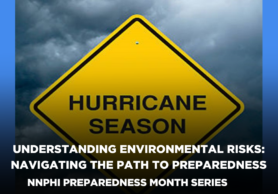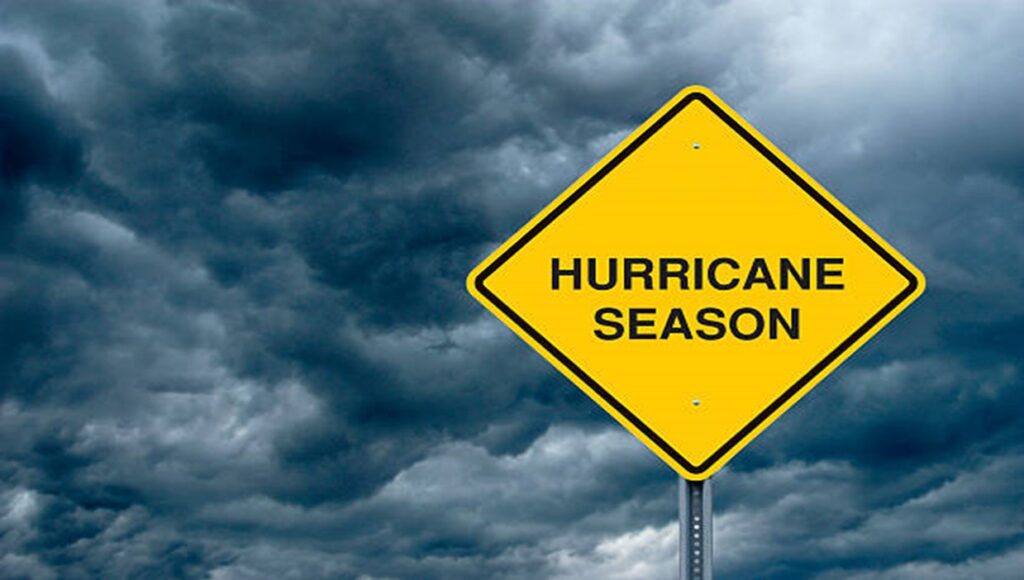National Preparedness Month Vol. 1: Understanding Environmental Risks: Navigating the Path to Preparedness
- By: National Network of Public Health Institutes and Jennifer Ventura
- Date
Understanding environmental risks is a crucial first step to being well-prepared for any issues that may arise in an increasingly unpredictable world. These natural occurrences, such as hurricanes, wildfires, floods, and earthquakes, can have a huge impact on our lives and the environment. According to the United States Environmental Protection Agency (EPA), being aware of common environmental risks can create more awareness to reduce health outcomes for yourself and those around you. Let’s explore the significance of identifying and understanding these hazards as we recognize Environmental Preparedness Month in September.
The Nature of Environmental Risks
Environmental risks are dangers that result from natural occurrences and are frequently made worse by human activity or shifting weather patterns. Understanding the nature of these occurrences and their possible effects is crucial because of how frequently they may occur. By doing this, we give ourselves the ability to make wise judgments and take preventative action to lessen their effects.
Assessing Common Environmental Risks
- Hurricanes and Tropical Storms: These intense wind and rainstorms have the potential to cause extensive damage, flooding, and power disruptions. It can save lives to be aware of the hurricane season (June 1st and ends November 30th) and become familiar with evacuation routes and emergency shelters.
- Wildfires: These are particularly common in dry areas where they can spread quickly and endanger populations living around these areas along with homes and property. Key preventative measures include identifying places that are prone to fire and making defensible spaces around your home.
- Floods: Heavy rainfall, rapid snowmelt, or dam failures can lead to devastating floods. Knowing your flood risk and taking measures such as elevating structures and having flood insurance can lighten potential losses.
- Earthquakes: These sudden ground-shaking events can strike without warning, causing structural damage and hazards. Learn about the possible activity in your region and secure heavy items in your home to prevent injuries.
Importance of Preparedness
Understanding these risks isn’t meant to start fear, but rather to empower individuals and communities to be prepared. By acknowledging the potential hazards, you can create comprehensive emergency plans, assemble necessary supplies, and stay informed about early warning systems. Preparedness is the cornerstone of resilience; it ensures that you can act swiftly and decisively when faced with adversity.
As we mark Environmental Preparedness Month, take the time to educate yourself and your loved ones about the environmental risks that could affect your area. Research local resources, attend community workshops, and consider engaging with organizations dedicated to disaster preparedness. We can create a culture of readiness in which awareness leads to action and saving lives becomes a collaborative endeavor.
In summary, understanding environmental risks equips us with the knowledge needed to face adversity head-on. By acknowledging the potential challenges, we empower ourselves to make informed decisions and take necessary precautions, ultimately ensuring the safety and well-being of ourselves and our communities.
About the Author:
Jennifer Ventura is a Program Assistant on the Climate, Crisis, and Preparedness Portfolio at the National Network of Public Health Institutes (NNPHI). She received her bachelor’s degree in Public Health from George Mason University in 2021. With an interest in Public Health and working on a focus on environmental health, my passion lies in understanding the relationship between human well-being and the environment. Through academic pursuits and current work experiences, I’ve become interested in the critical role of promoting climate change awareness. Recognizing that a healthy environment is crucial for community health, I’m dedicated to advocating for policies and practices that foster sustainability and safeguard the planet for current and future generations.


 Subscribe To Our Communications
Subscribe To Our Communications